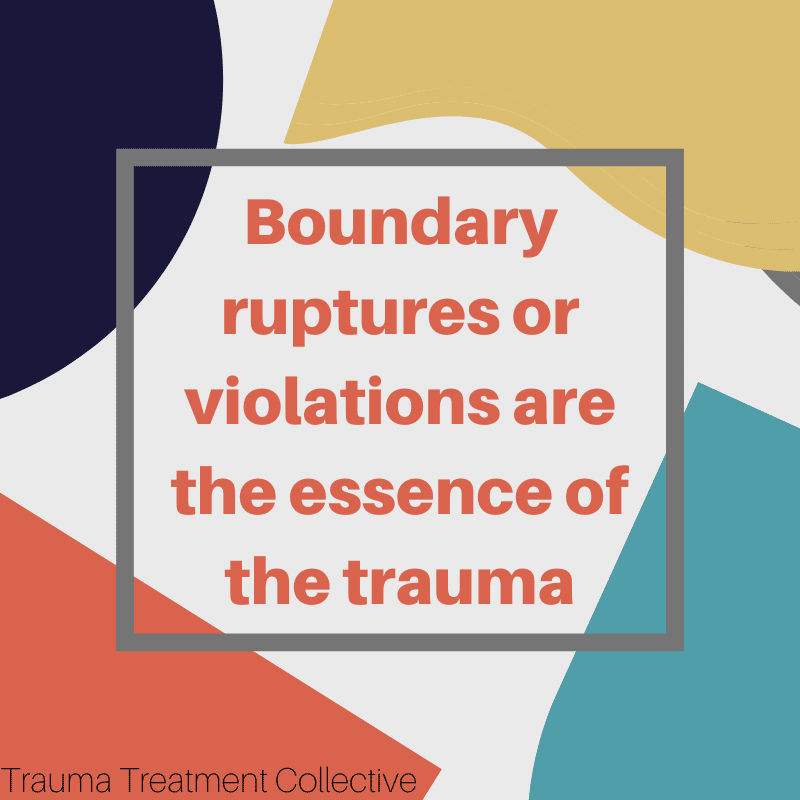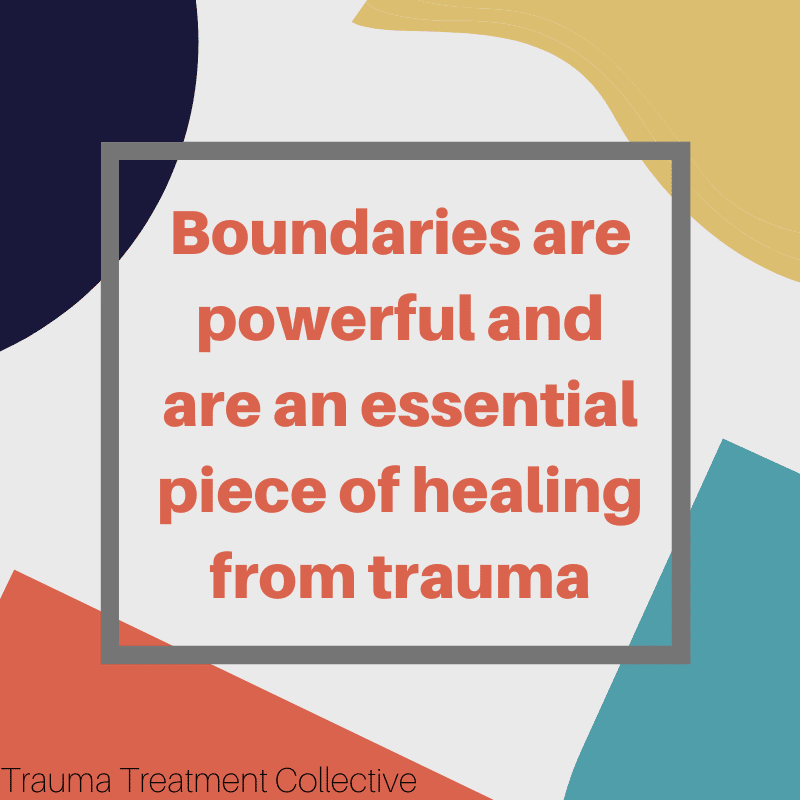
Helping clients heal from boundary ruptures or violations are unavoidable when it comes to working with trauma survivors. In many cases, boundary ruptures or violations are the essence of the trauma. Helping clients have a sense of safety in their own skin, within the relationship with you, and outside of the treatment experience is essential to good trauma treatment. One of the ways to do this is working with the client’s boundaries.
Boundaries are the barriers that allow things “in” that are good for us AND that allow you to expel things “out” that are not good for you.
So common signs that indicate boundary work might be needed with a client are as follows:
- Struggles in relationships – client is very rigid, inconsistent, or unaware of how to keep themselves safe in connection to others.
- Constant physical injury – client consistently sustains injury in a certain region of their body. For example, when I would get overly stressed, I would always end up hitting the front of my head by walking into something.
- Consistently using absolutes – client uses terms like always, never, everytime, etc. to describe situations.
- Struggles with saying no – client finds themselves saying yes to things before considering their own needs.
When I notice that a client could benefit from boundary work to help them gain a deeper embodied sense of safety, I will do two things. The first thing is to provide psychoeducation on boundaries. You can see how I do that here.

Then once that is done, I will do some boundary work using a string activity I learned in my Somatic Experiencing Training, which is below:
Boundary Work – Provide client with psychoeducation about boundaries. Then provide your client with a variety of yarn options. Have them pick a color and texture that “speaks” to them. Next, have your client create a shape that represents their idea of what their boundary might look like. Have them think about what feels right regarding size, shape, position, etc. Let your client use as much space and any objects that they would like. Once they finish, process the activity with them.
*In another session you could have your client recreate their boundary the same if that feels right or make changes. You could process the changes made as well as work on making “boundary statements” such as, “This is my boundary”, “It is okay to have a boundary”, or “I feel safe in my boundary.”
Boundaries are powerful and are an essential piece of healing from trauma. Take time to help your clients establish safety by doing some boundary work with them. It is usually a rich experience for the client.

